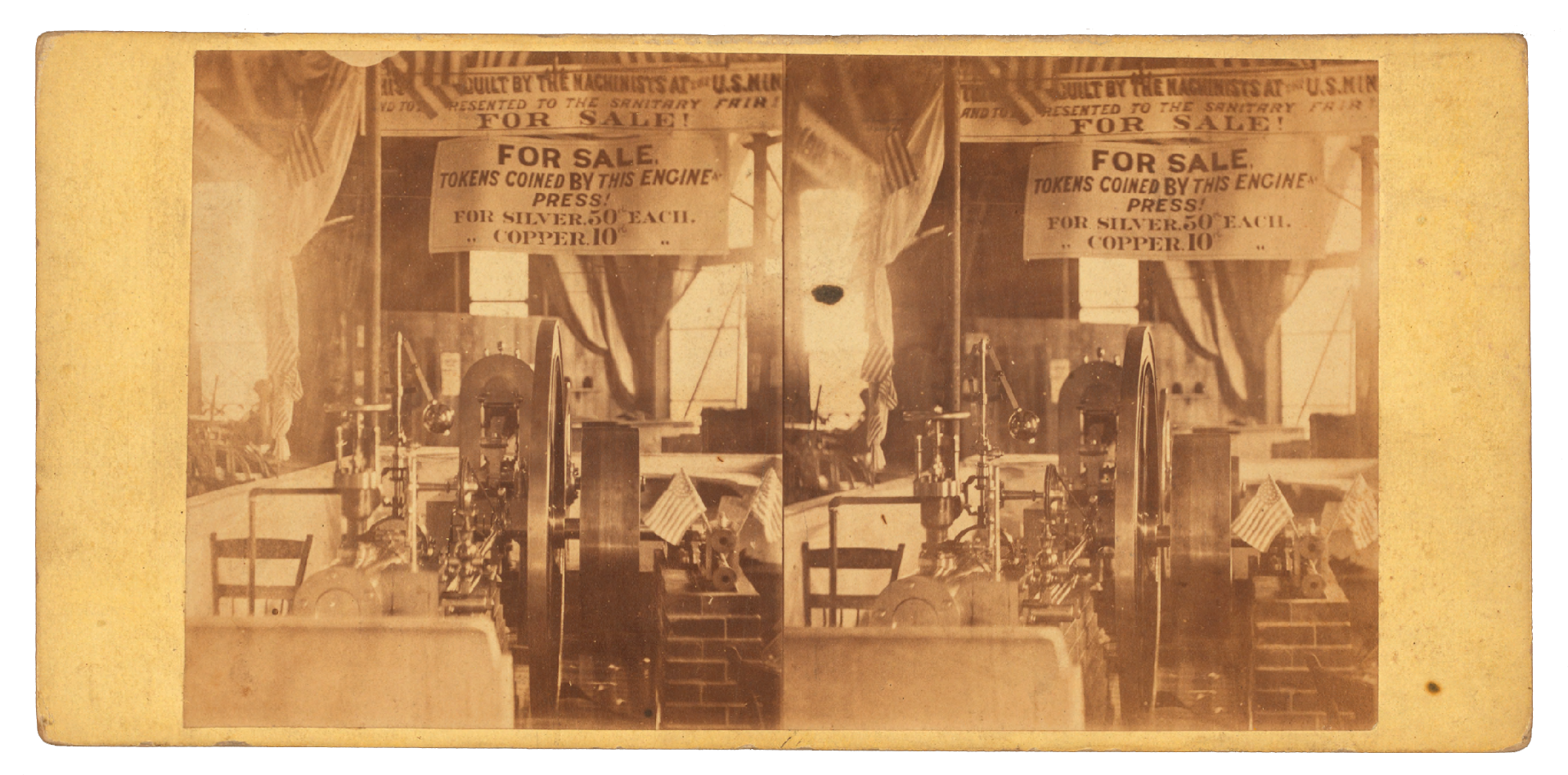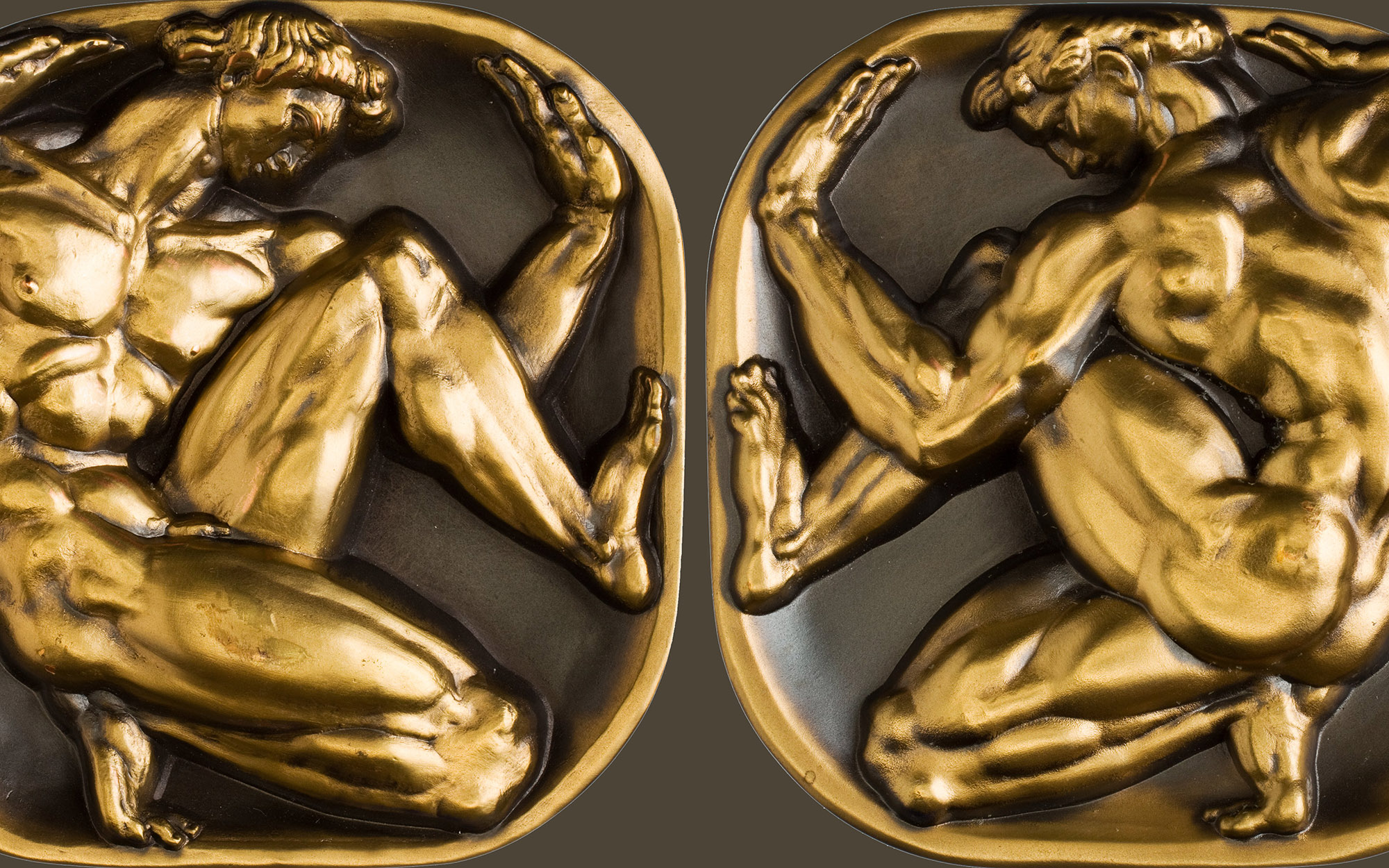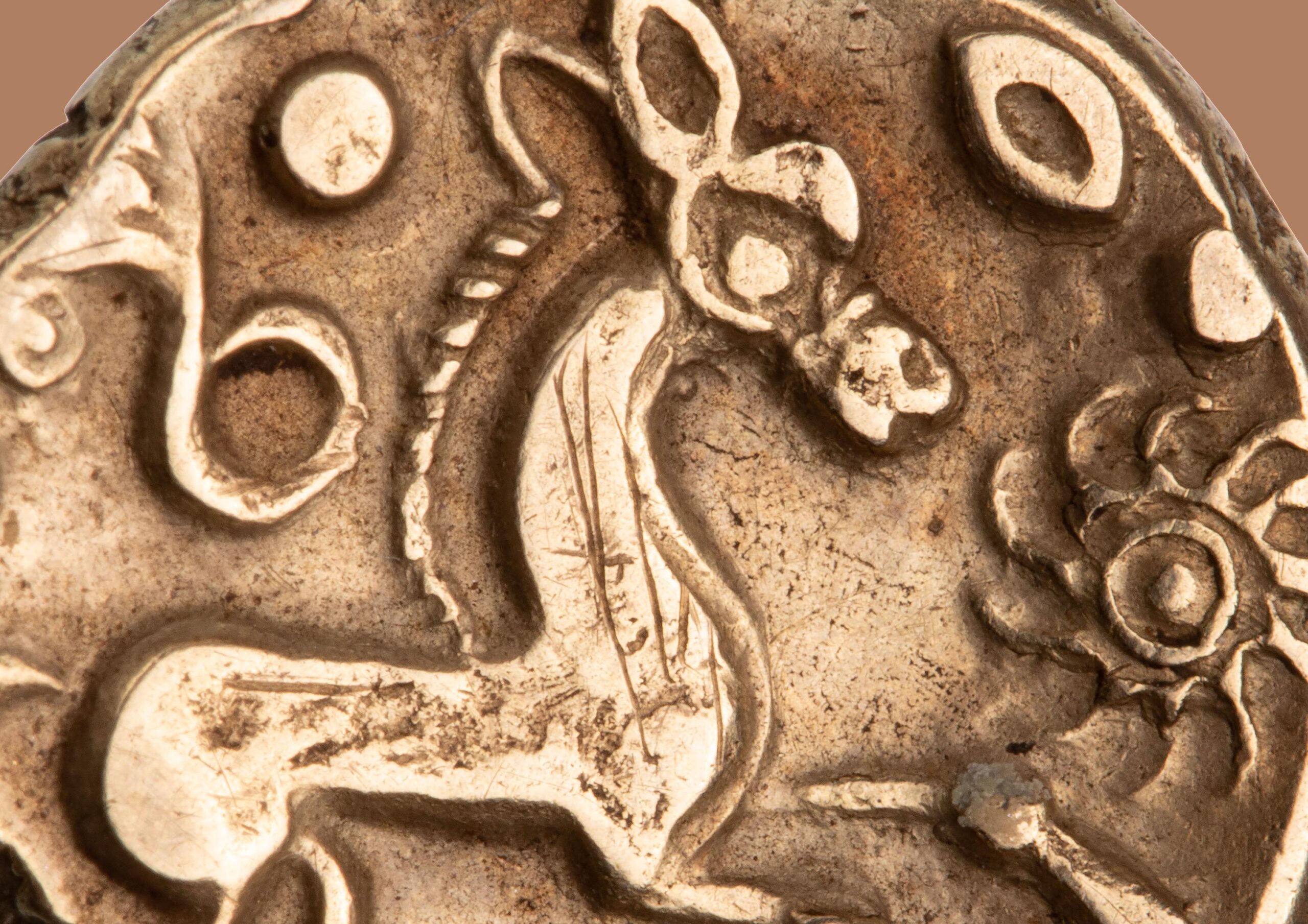Philadelphia Sanitary Fair Tokens, 1864

The United States Sanitary Commission was a relief agency created to support soldiers that fought for the Union during the Civil War. It was a private organization that raised funds, coordinated donations of basic necessities and medical supplies, and provided volunteers to care for the sick and wounded. In line with other benevolent organizations of the time, women played a leading role as the Sanitary Commission offered a way for them to make a meaningful contribution to the war effort.

One of the ways that the group raised money was by organizing Sanitary Fairs, which were exhibitions that featured a panoply of art, technology, and entertainment (click on the cover image of the guide to the Philadelphia fair at left to get an idea of the range of attractions on offer). Such fairs were held all over the country during the war, but the one held in Philadelphia in June of 1864 was one of the largest. It was known colloquially as “The Great Central Fair,” and an enormous exhibition hall was constructed at Logan Square to host the proceedings. Patrons paid an entry fee and then there were a variety of goods for sale and charitable opportunities within, the profits from which were subsequently donated to the commission. The fair occurred in the shadow of the Battle of Cold Harbor, where an ill-conceived frontal assault by Union forces had led to a frightful number of casualties. Despite the grim news from the front lines, the fair itself was by all accounts a great success. On June 16, President Abraham Lincoln paid a visit with his family, and made a rousing speech thanking the Sanitary Commission for its efforts towards “the comfort and relief of the soldiers,” and beseeched the public for more assistance.
One of the interesting numismatic elements of the Philadelphia Sanitary Fair was a coining press for making tokens, which was operated by machinists at the US Mint.
This stereoview shows the set up of the coining press at the fair amidst a thicket of American flags. The banner overhead advertised copper tokens for 10¢ each and silver for 50¢, and the ANS holds several examples of both kinds.


At 18 mm in diameter, they are almost exactly the size of a current dime, and they are not particularly rare so a goodly number seemed to have been produced during the fair. The bust might not be instantly recognizable as such, but it is George Washington, and the reverse has a simple and curved descriptive legend. The number of extant examples and the relatively high cost of the tokens vis-à-vis the materials used suggests that it was quite a successful fund-raiser.
A larger and more formal medal was also struck by the US Mint to mark the occasion. It was crafted by longtime engraver Anthony C. Paquet, and it neatly encapsulates the activities and purpose of the Sanitary Commission.
If you dropped the last “FOR US” part, the legend would make a nice rhyming couplet! In any case, this particular medal is I suspect a later restrike from the original dies. Together, these pieces are a useful reminder of the significant role that women and charitable organizations like the United States Sanitary Commission played in supporting the war effort and ameliorating the terrible impact the war had on the men who were fighting it.
For more on the Great Central Fair, the Library Company of Philadelphia has a small digital exhibition with lots of images that you can find here. A comprehensive contemporary account by Charles J. Stillé can be read here. On the larger and longer history of fundraising fairs in the United States, see Beverly Gordon’s Bazaars & Fair Ladies (1998).






